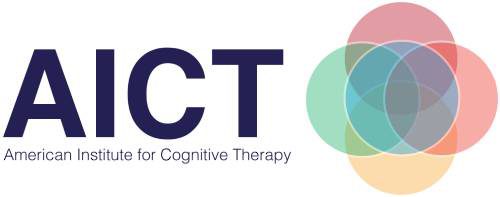Obsessive Compulsive Disorder
What are Obsessive Compulsive Disorder thoughts?
Studies show most people have “OCD” thoughts. Many people have thoughts about making mistakes, contamination, unfinished tasks, sexual fantasies, or thoughts about unwanted impulses. But people with OCD find these thoughts more upsetting and they respond more strongly to these thoughts. Disturbing thoughts go against the OCD client’s beliefs and values. For example, a very religious man may fear he will commit blasphemy. A loving mother may fear harming her child.
People with OCD try to avoid these thoughts or force them out of their mind with tricks. These tricks provide short term relief. So, the OCD patient continues having these thoughts and trying to control them without success. Over time the thoughts gain strength and recur more often. Rituals can grow to take over their lives.
schedule a consultation at or intake@cognitivetherapynyc.com
OCD patients often have specific beliefs about their intrusions. These beliefs may include the following:
“I need to stop this thought right now”
“If this thought doesn’t stop, I will lose control”
“If I have this thought again, something terrible will happen”
“These thoughts show that I am evil”
“No one else thinks like this”
“If this thought doesn’t go away immediately, there must be something wrong with me.”
Many of these beliefs are what we call “fusion metacognitions.” Metacognitions are thoughts about your thoughts. People with OCD are continually scanning their thoughts and evaluating them. There are several components to this.
1. Thought action fusion – The belief that a bad thought will make one perform an awful behavior. OCD patients may view thoughts and behaviors as moral equivalents. “The thought of pushing someone into the subway, means I will do it.” Or “Having that thought makes me an awful person, even if I don’t do it.”
2. Thought event fusion – The belief that a thought will cause external events to occur. “Thinking about a homeless person means I will lose all my money.”
3. Thought object fusion – The belief that thoughts and feelings transfer between objects. (“If I touch that door handle, the next person who touches it will become contaminated.”)
How Does Cognitive-Behavioral Treatment for OCD Work?
OCD clients may believe that compulsions keep them sane. They believe that they can’t stand skipping compulsions. They think that they will get more and more anxious and they often worry that they might go crazy.
Clients learn to manage anxiety without compulsions. They learn that they can face their fears and feel better. They learn they don’t need to engage with their thoughts. This may be hard to believe, but it’s true. The process is gradual. Cognitive-behavioral treatment for OCD usually takes about 20 sessions. Treatment may take longer for people with severe symptoms.
How Effective Is Cognitive-Behavioral Treatment For OCD?
One review examined 16 CBT treatment studies for OCD (Olatunji et al., 2013). Participants’ showed large symptom improvements. Improvements to treatment may include:
-less distress to intrusions
-less time spent on intrusions
-less time devoted to rituals
-more freedom to enjoy activities in personal and professional life
the highest quality
cognitive-behavioral
treatment”
Medications for OCD
Many people use medications to assist in their OCD treatment. Some OCD medications increase levels of the chemical serotonin in the brain. Studies have shown that medication alone can improve symptoms. But these symptoms often return after a client discontinues medication. The key component of Cognitive Behavioral Treatment is to give you the skills to cope more effectively.
Resources
International OCD Foundation
(http://www.ocfoundation.org/)
Anxiety and Depression Association of America
(http://www.adaa.org/understanding-anxiety/obsessive-compulsive-disorder-ocd)
Fictional OCD example
Bill reports intrusive thoughts. He sees gruesome pictures in his mind. He feels anxious. The pictures include loved ones. He sees them 20 times each day.
Bill wants to clear thoughts. He counts even numbers to 20. Sometimes one round clears thoughts. It may take many rounds. It may take 2 hours to feel calm. But the ritual works eventually.
When he sees his daughter, the thoughts return. He tries to dismiss them. He remains distracted. Then he excuses himself to count again. He decides there must be another way.
Bill makes a CBT appointment. He describes habits of many years. Bill began counting to reduce anxiety. First he counted just a few numbers. That neutralized the thoughts. Then he counted more over time.
The therapist gives him information on OCD. Bill’s strategy made sense. Counting gave short term relief. But long term it made things worse.
It took more time. It took more effort. It crowded out important things. He wasn’t present with family. He avoided people to manage thoughts. He spent hours in distracting activities.
His response strengthened these negative beliefs.
-“I can’t handle anxiety.”
-“I must attend to thoughts.”
-“I must control thoughts.”
-“I can’t trust myself”
-“Thinking is the same as doing”
The therapist taught him different responses.
Bill started by adjusting counting. He counted odd numbers. Then he counted at different times. He counted only once a day. He deliberately brought up thoughts. This time he did nothing in response. His fear was intense, but he tolerated it.
He also examined his beliefs about thoughts. They didn’t need to be controlled. Bill learned he can let thoughts run. He learned he can tolerate anxiety. And he could focus with his daughter.
